101 How to use the paracord
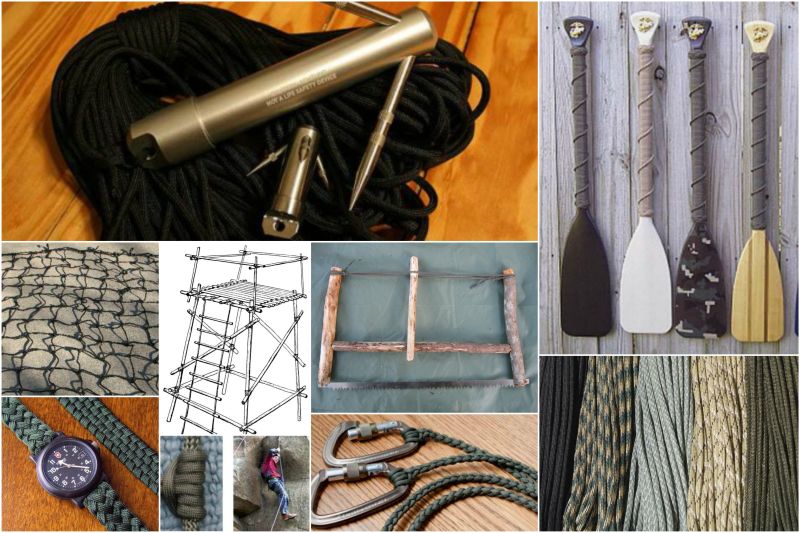
Parachute (English Parachute cord, paracord, for type 3 - 550 cord) is a lightweight polymer cable made of nylon, originally used in parachute lines. Paracord can be used for many other purposes, both military and civilian population.
The shell of the paracord is woven from a variety of interwoven fibers, due to which it is relatively smooth. Paracord made entirely of nylon is quite elastic.
Technical standards for the production of paracord are published by the Parachute Industry Association. The US Army Standard MIL-C-5040H allows the manufacture of a paracord only from nylon. Similar types of cables can be made from other materials, for example from polyester.
For most people, the paracord is known as a very convenient device with a variety of applications. In fact, there are hundreds of possible alternatives to its use, which makes paracord a valuable addition to any set of equipment and equipment for survival. Below is a list of more than 100 ways to use the paracord to show how universal it can be.
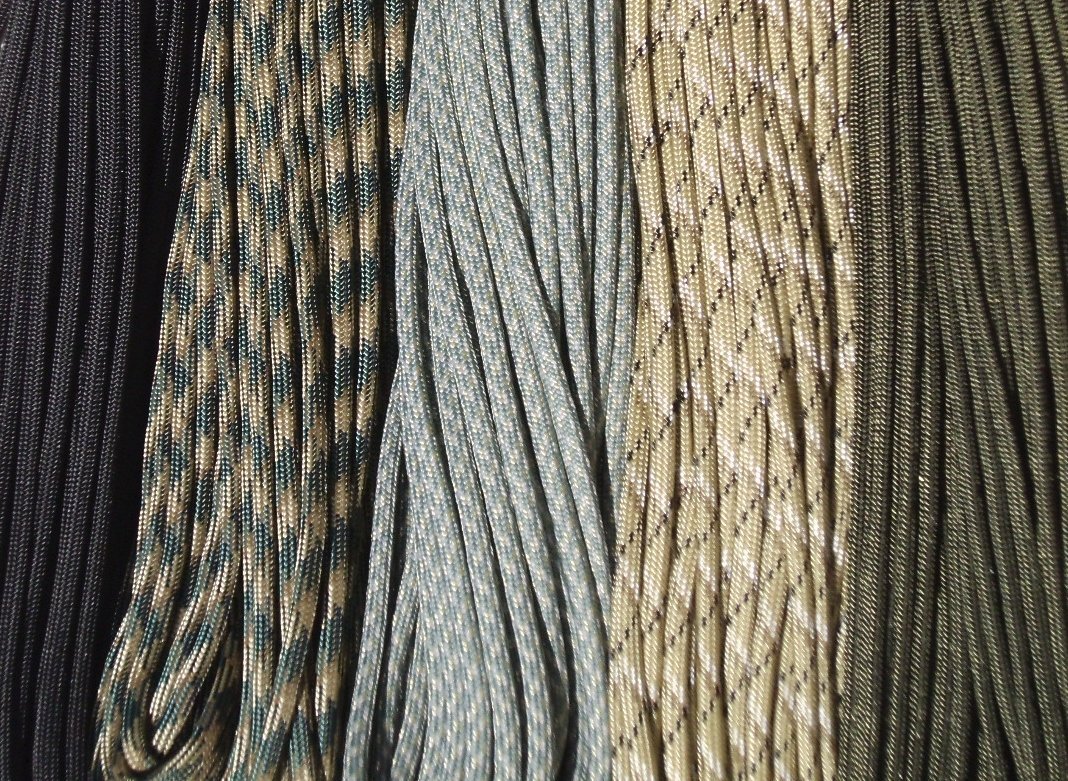
Paracord is so universal that you may have a desire to purchase it in huge quantities for camping and hiking. Since this product is in a variety of colors, it can be bundled with various packages, sports bags, cartridges for ammunition, equipment, weapons, and many other types of equipment to identify things by color code.
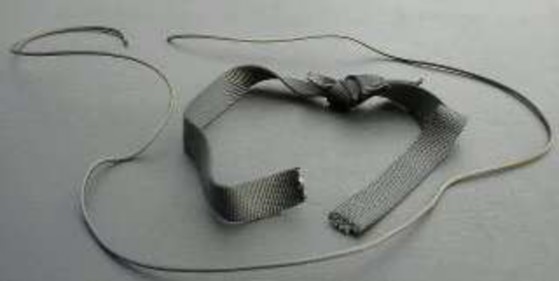
Paracord can be used as a cutting tool (for example, as a friction saw). The rope section can be used to cut another piece of parakord or similar material, for example, nylon or a thin strap. Just drive him from side to side, and he will cut his way.
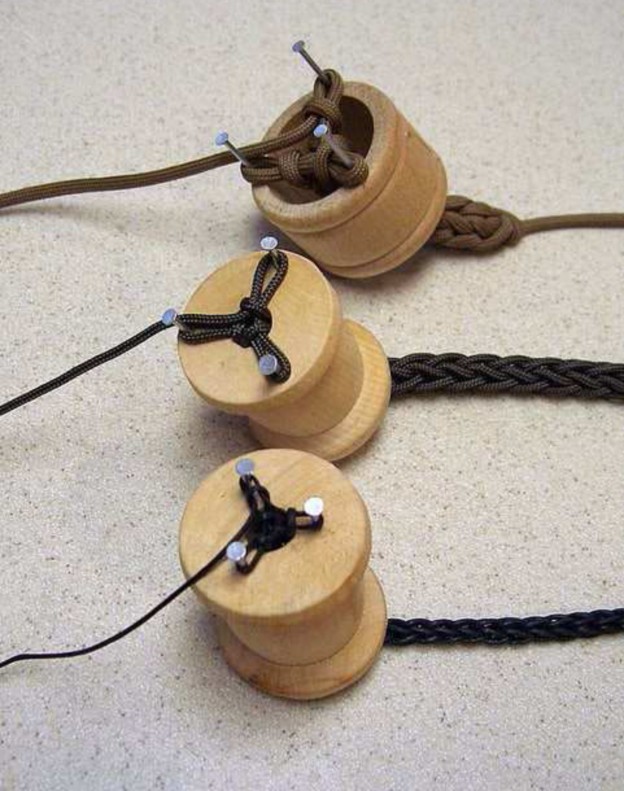
Let's continue: if you have enough rope, you can create a rope with an even bigger diameter, spinning parakord manually, or with a simple weaving, as shown in these examples. Since the standard paracord can withstand a load of 550 pounds, the resulting rope with a large diameter will have a strength of 550 times more per rope in the weave.
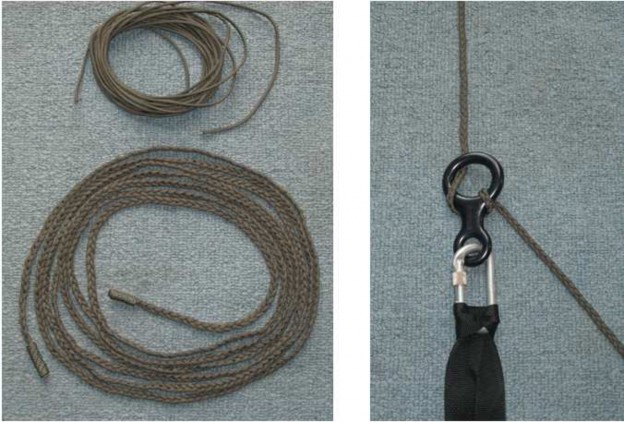
Three pieces of parakord woven together, as shown here, create a rope that can withstand 1650 pounds. Such a rope can be useful in many emergency situations, for example, be used as a life-line for leaving a burning building, etc.
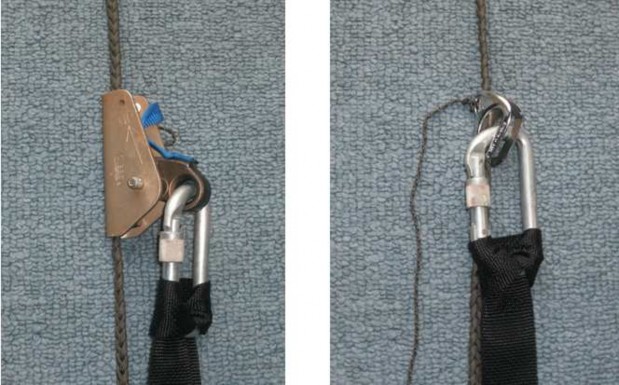
A braided rope can also be used for rock climbing, complete with other outfits presented above.
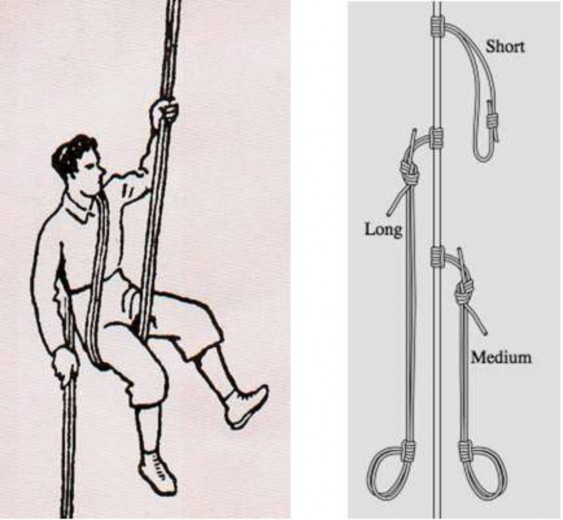
If you only have a paracord without another safety gear, you can still go down on the rope using the method of gradually lowering the body, and climb using the standard Prusik knot, as shown here. It is not easy and dangerous, but it is still possible.
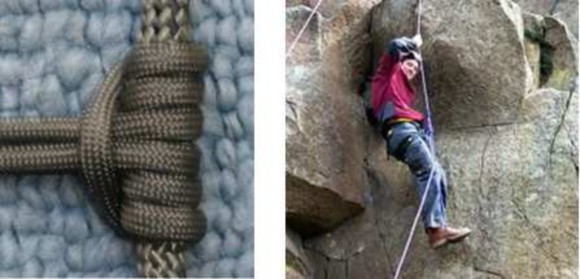
Paracord is strong enough to tie it with Prusik's knots in case of an unforeseen climb into the mountains.
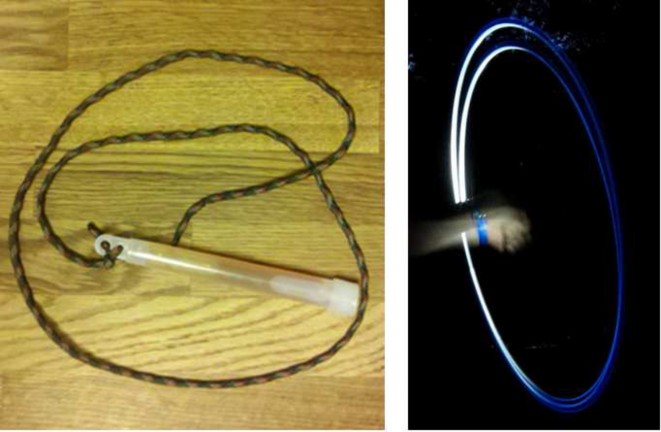
Through the entire length of the paracord, you can tie the flashlights and turn them on at night as an alarm.
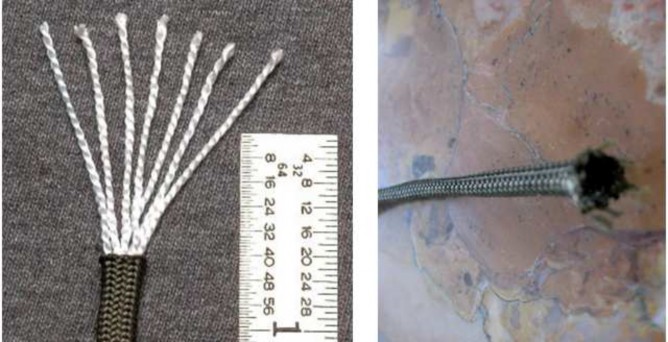
Paracord 550 can withstand 550 pounds. The individual components of the paracord rope are made of outer braid with a strength of 300 pounds, and 7 internal fibers, each of which has a strength of 35 pounds (inner fibers are made from double pairs of smaller fibers with a strength of 17.5 pounds each). Each of the above components has a variety of uses, either alone or in combination with other equipment.
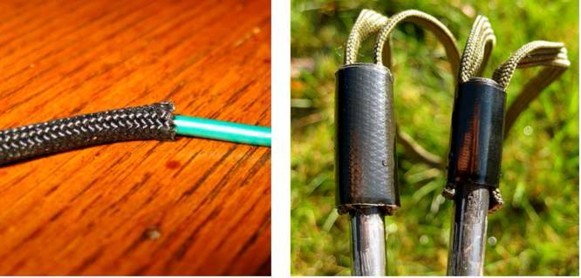
The outer braid is a strong tubular braid that can withstand a load of more than 300 pounds. The braid can be worn over electrical wires to provide additional insulation and abrasion resistance. It can also serve as good straps and laces for small items.
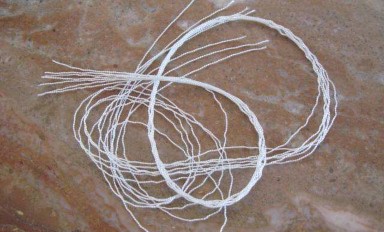
Internal fibers can be used to make homemade traps, fishing rods, conventional and dental floss, gill nets, small anchorages, emergency sutures, trip wires and other items that require a strong fiber.
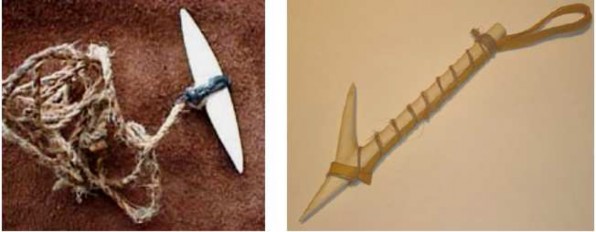
Two types of self-made fishing hooks, in which small cords serve as attachment points.
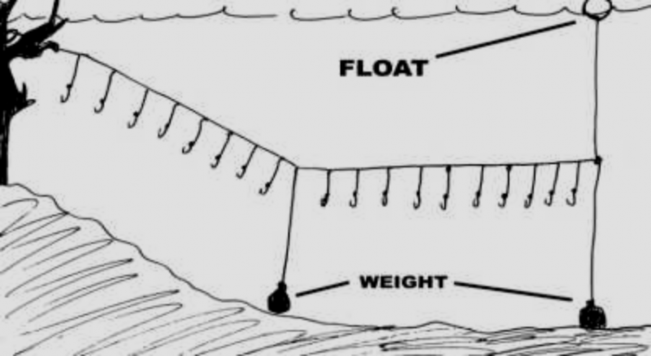
The ideal use of parakord is the manufacture of self-made hooks.
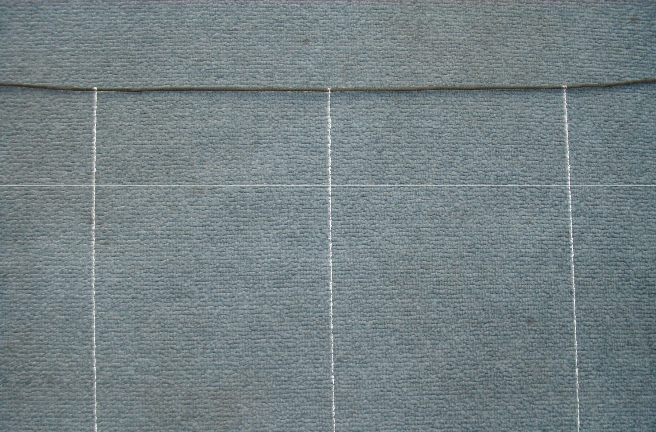
Homemade hooks from the paracord are made by separating the internal fiber lines. The braid is used as a base, and the inner fibers are used as lines of tangential descent. Add a hook and weight to each line, then attach the bait. Tackles can be installed from shore to shore, or between hidden anchors.
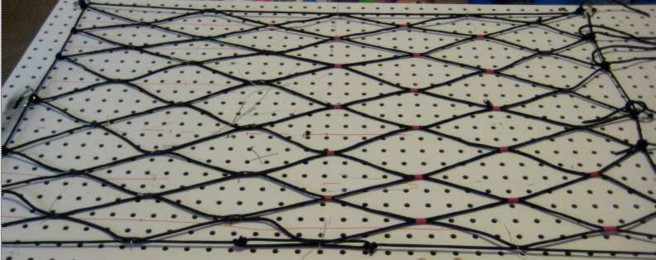
From the parakord you can make a fishing net, but you will need about 200 feet of rope to make a 4x8-foot network with three square holes. Still not the most effective way to apply the paracord.
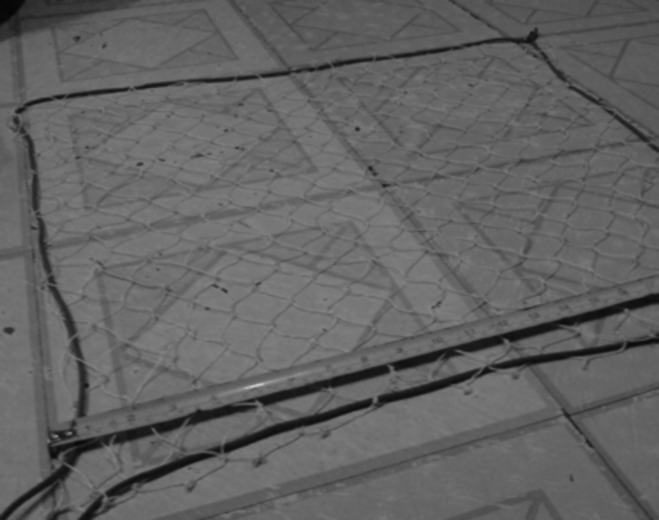
The most optimal way to make fishing nets is to use the parakord sheath as the edges of the net, and make the weaving of the inner fibers. To do this, you will need a lot less parakorda, and as a result you will get an excellent network.
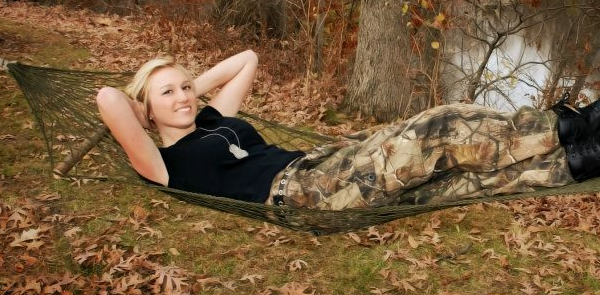
From the paracord you can make a very strong hammock, but for this you need to spend a large amount of rope.

Another way to make a hammock is to use the paracord as a fastener for a strong fabric.
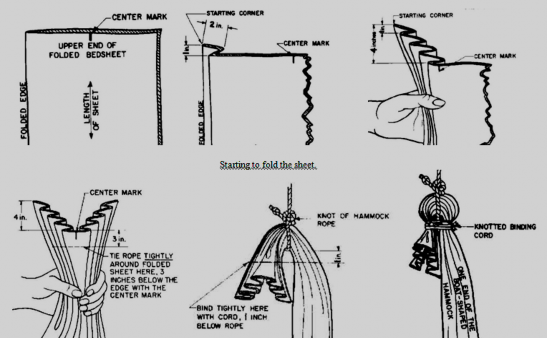
Thus, you can tie the ends of a dense fabric to get a navicular hammock.
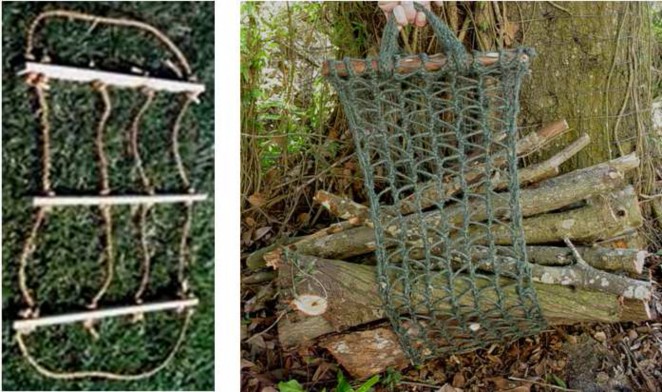
Paracord can be used as an assistant wood carrier, which will facilitate any camping and trekking.
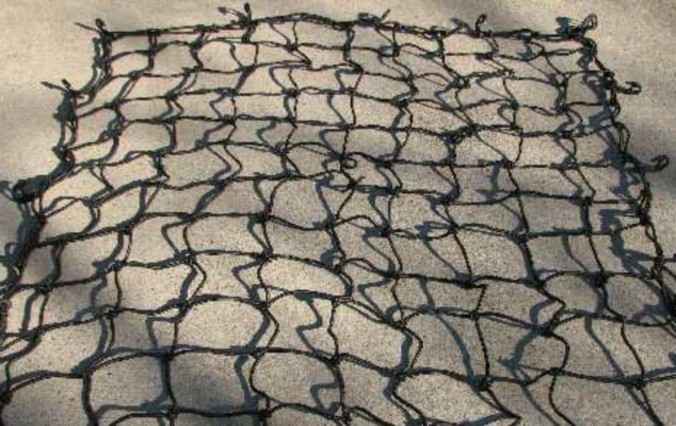
Good use of the paracord in the manufacture of cargo networks and traps for large game animals.

With the aid of a paracord, a simple clamping tool can be made using inner fibers as knives.

Similarly, you can make a great knife for sharpening.
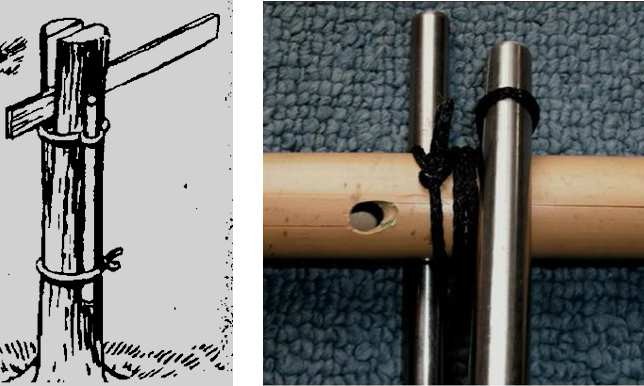
Homemade vise made from a cut tree at a comfortable distance and with a comfortable split, parakord and stick used as a harness to provide downforce. Another clamping tool, made of a short piece of parakord (or other rope) with a loop at each end, and two lever sticks, is very useful for opening closed bamboo stalks.

Paracord can be an excellent device for firing a fire by rubbing.
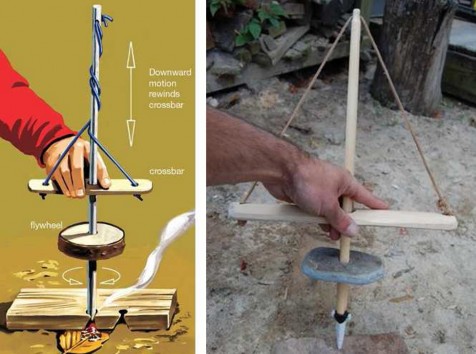
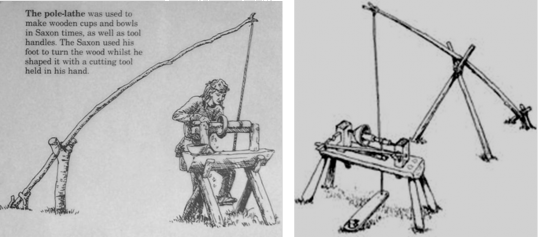
Simple mechanisms, such as the lathe shown above, can be made with the use of a paracord.
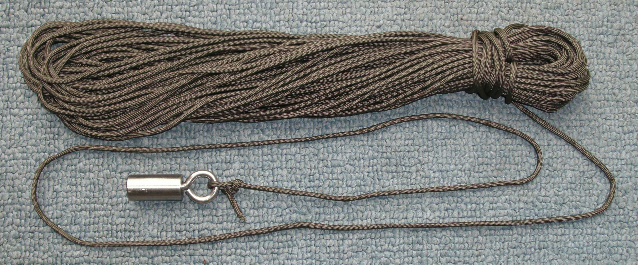
The small weight and length of the paracord make it a comfortable throw.
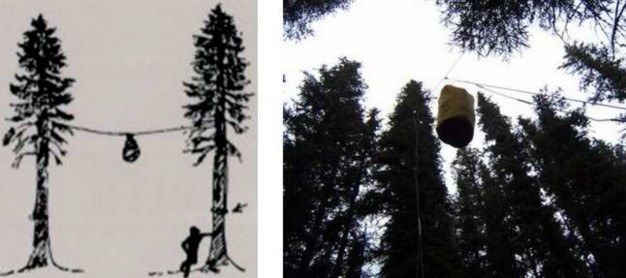
The outfitting helps to hang supplies on trees, protecting them from bears and other hungry creatures.
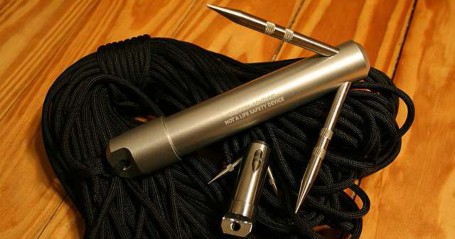
With a paracord, you can also use a small hook, as a throwing and search tool.
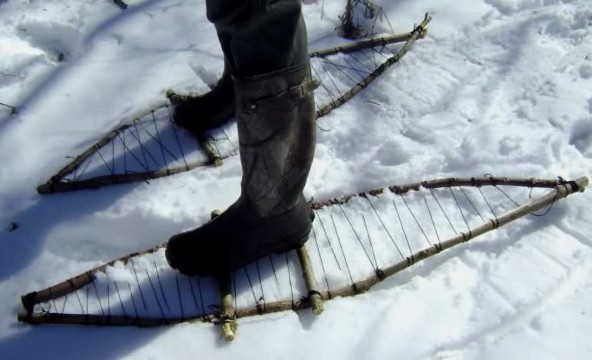
Homemade snowshoes can be made from branches, using a paracord for fastening, straps and bindings.
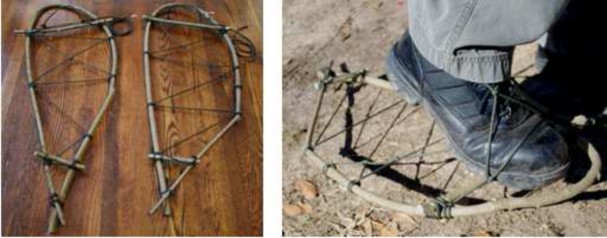

Excellent manufacture of sling (the main weapon for throwing stones) from just one piece of the paracord.
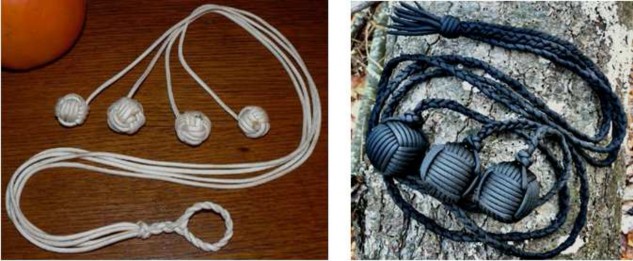
Paracord can be tied around the stones to make a bolo - a primitive throwing weapon.
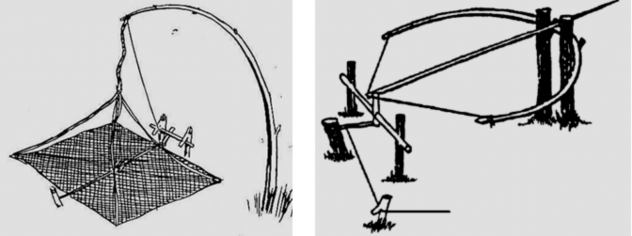
There are many types of traps in which gear and paracord are used. From these improvised tools, you can make traps, windmills, traps, boxes-traps, traps for fish, mini-traps and outdoor alarms
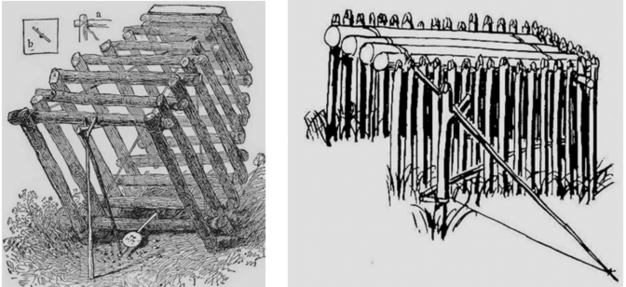
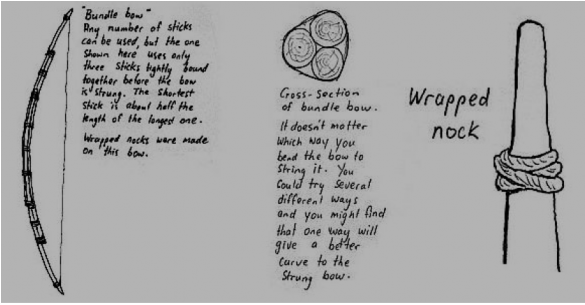
From the parakord it is very convenient to make a primitive rifle outfit, and use inner fibers as anchorages for ferrules and arrows of arrows.
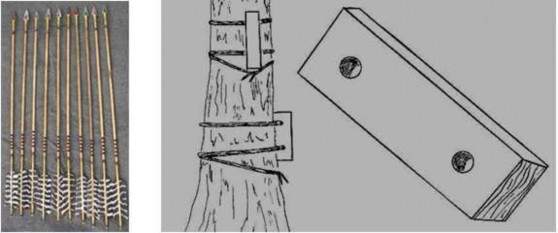
Homemade steps on the tree can be made from a piece of wood with two holes drilled, as shown in the picture, after tying them to the trunk of the tree with a parakord, and double-tying around its axis.
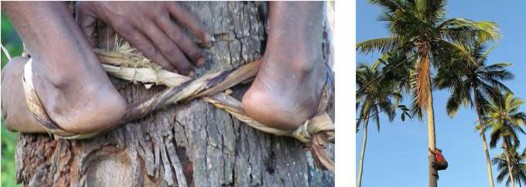
Also, to climb a tree, you can make a device widely used in the tropics to collect coconuts from trees. This weave has an eight-shaped shape and is usually made from loops of the vine to create a grip of the legs with the tree trunk. Braided in this way, the paracord, can be used even in the field of rock climbing.
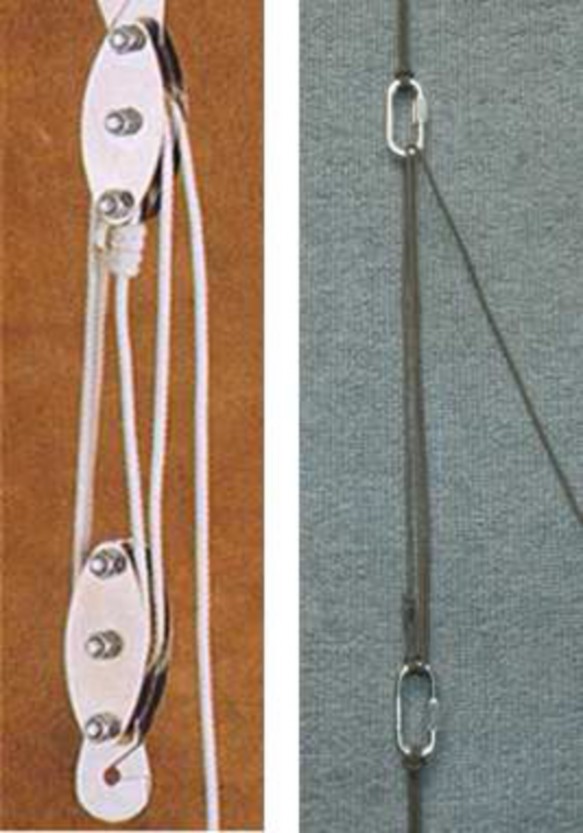
Paracord can be passed through two chain links or a carbine to make an impromptu lift.
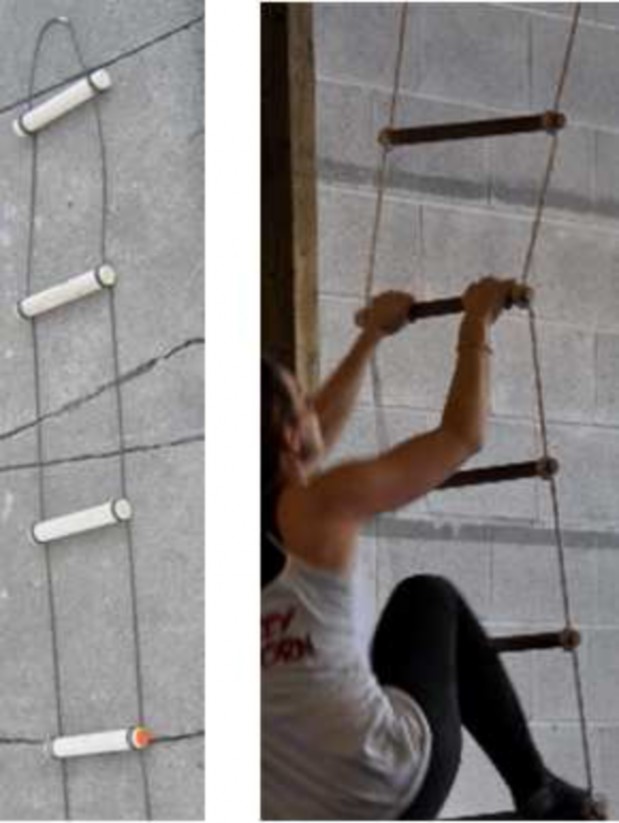
Paracord is strong enough to make a simple rope ladder with sticks or dowels. Tie three ropes together, if you need a sturdier staircase.
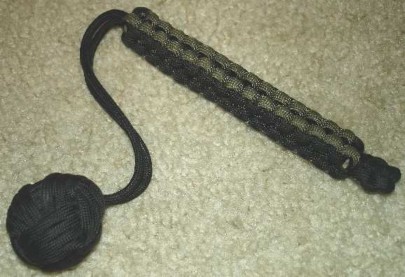
Tying a paracord around the lead fishing weight, you can make an improvised baton.
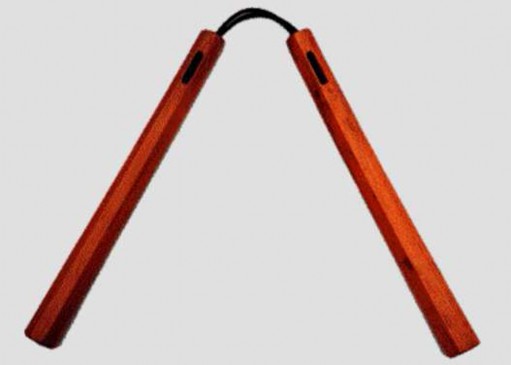
By combining two sticks with the help of a short section of the paracord, you can make nunchuck.
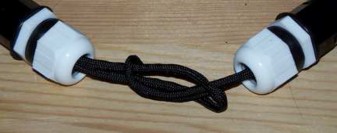
Two sticks, connected by a paracord with loops at the ends, turn into instant nunchakas.
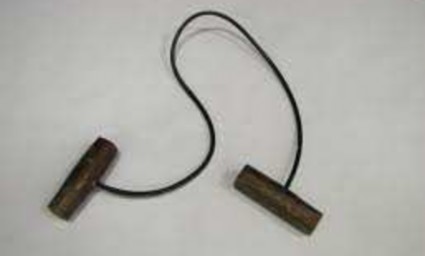
Paracord is strong enough to use it as a garrot.
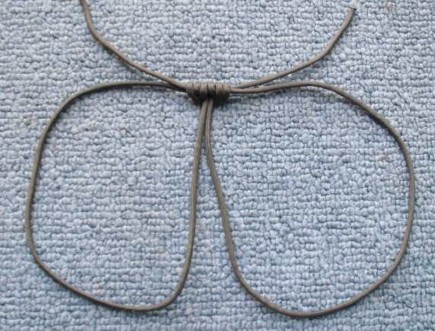
It is also an excellent alternative to handcuffs
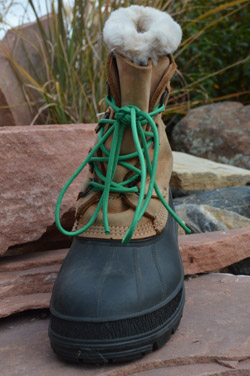
Paracord perfectly replaces shoe laces
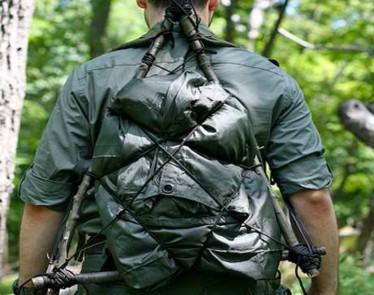
You can make a homemade backpack of three sticks connected together by a paracord.
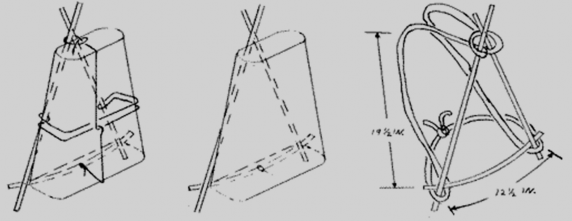
Above is shown how to make a backpack of three sticks. Shoulder straps can be made from a wrapped paracord.
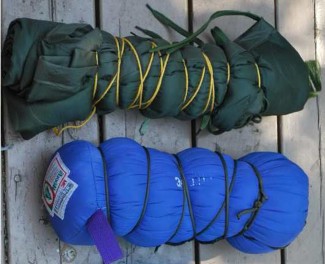
Paracord can be used to compress ponchos or sleeping bags to save space in your backpack.
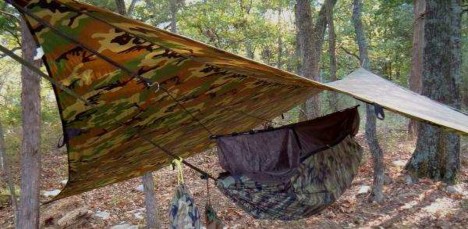
During camping, the paracord can be used as a tarpaulin over your hammock.
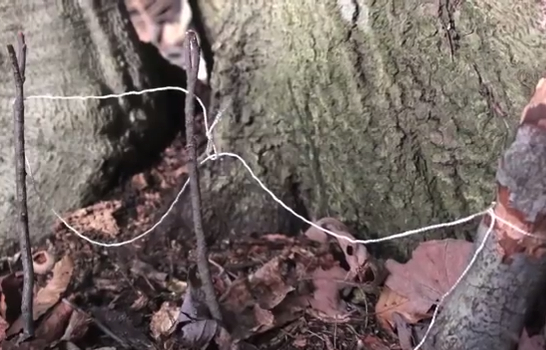
Paracord can be used to make small traps
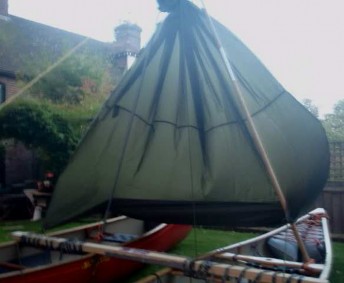
You can use the paracord to tie small boats to each other, thus forming a catamaran, and equipping it with self-made sails.
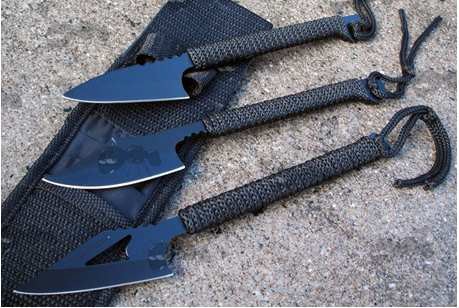
Paracord is good as a means of attachment for harpoons.
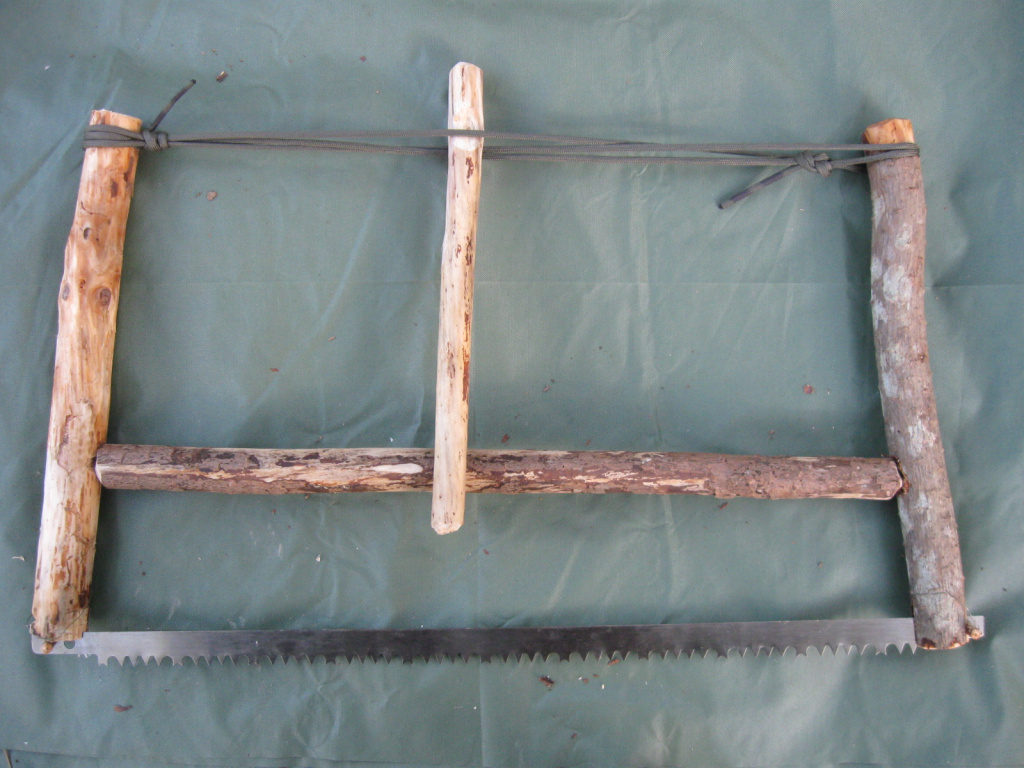
Paracord can also be used with sticks and a saw blade to create a self-made hand saw.
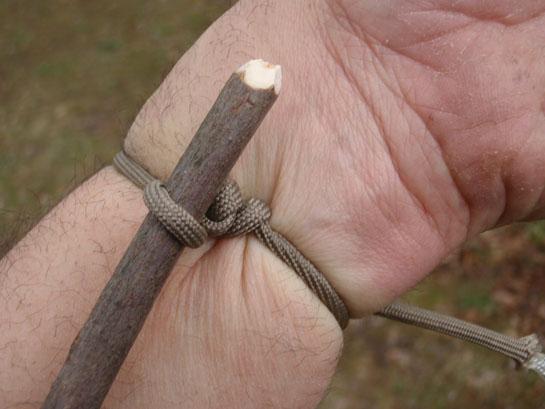
The paracord shows itself perfectly as a hemostatic tourniquet.
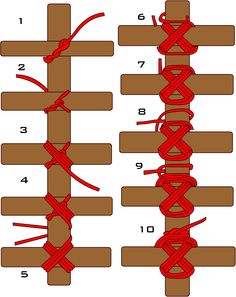
You can create any of the innovative projects, for example, camp furniture, bridges or towers, where paracord is used as a rope, tying different fastening points, for example, square or diagonal fastening.
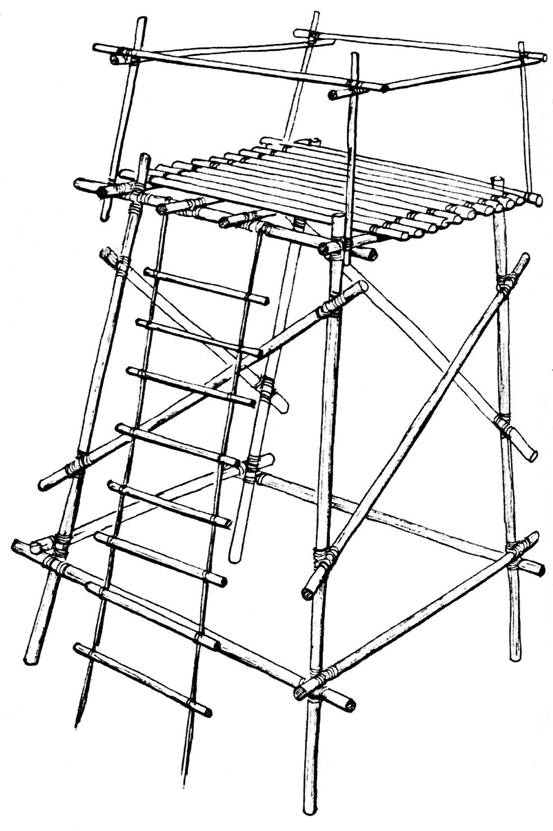
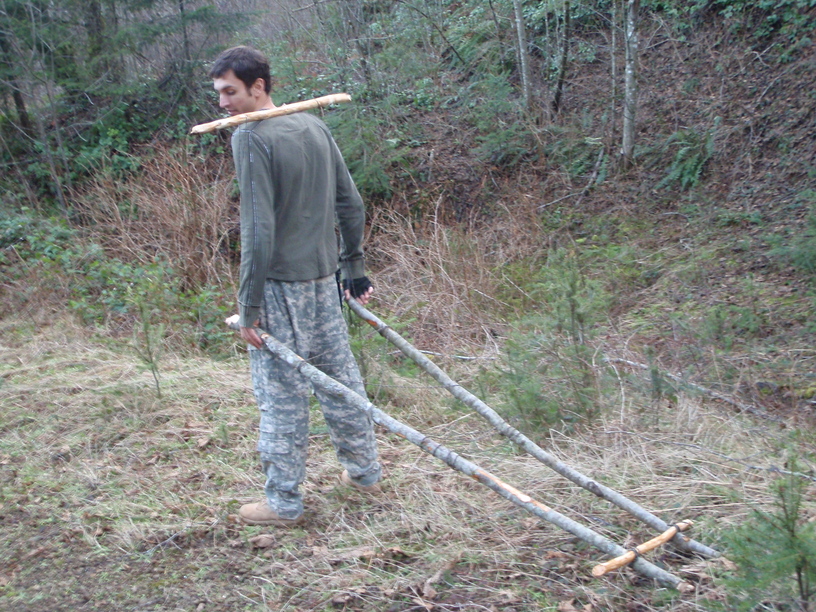
Paracord is strong enough to tie it together some kind of stretcher to move injured people.
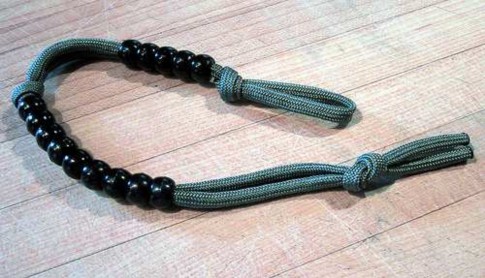
An example of an army bracelet from a paracord.
. 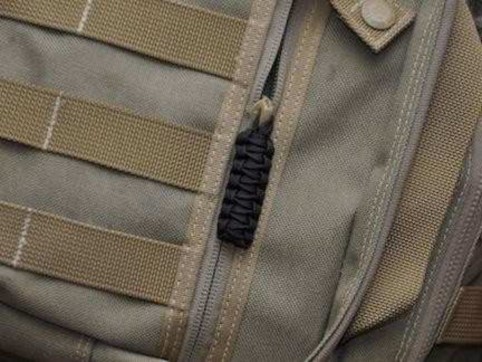
Woven paracord will serve as an excellent runner with a zipper

Any small object, for example, a key, is much easier to find in your pocket or bag, if you equip it with a sword-strap from a parakord.
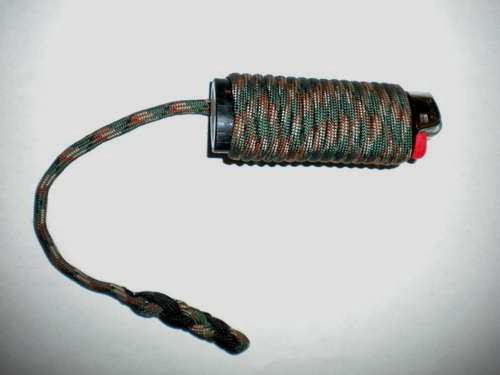
If you are tired of losing a lighter, make a keychain for it.
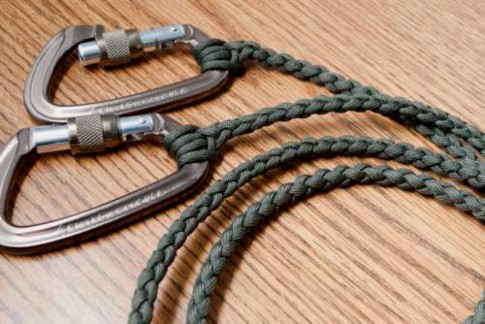
A simple way to bind items is to use a piece of woven paracord with a carabiner at each end.
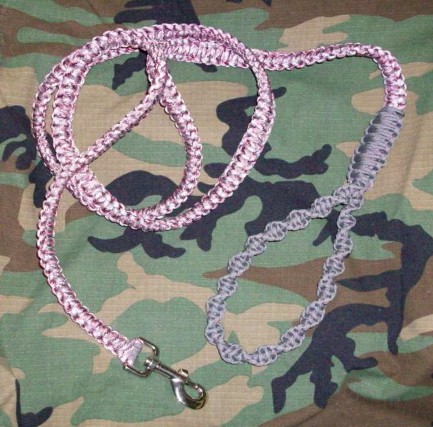
Another useful use of a woven paracord is a handy dog lead.
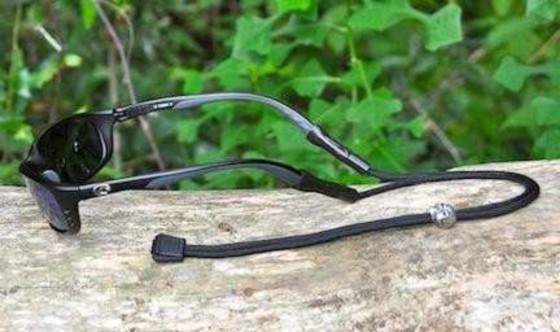
The empty shell of the paracord is an excellent nasal cord, for example, for sun glasses.
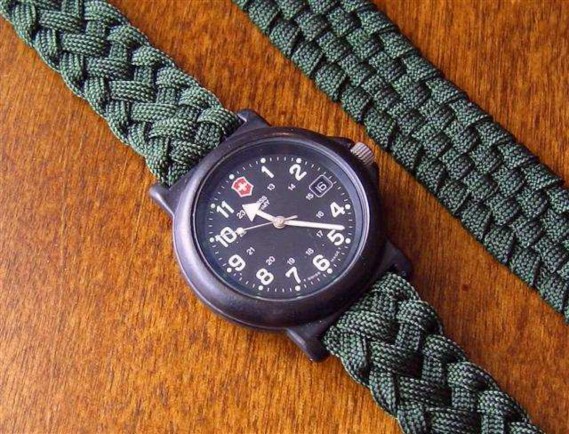
Paracord (or its empty shell) can be used as straps for a wristwatch.
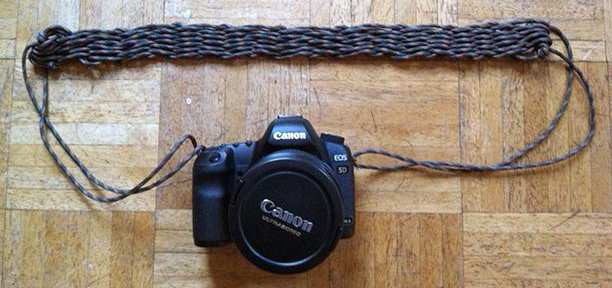
Here is an excellent strap for the camera.
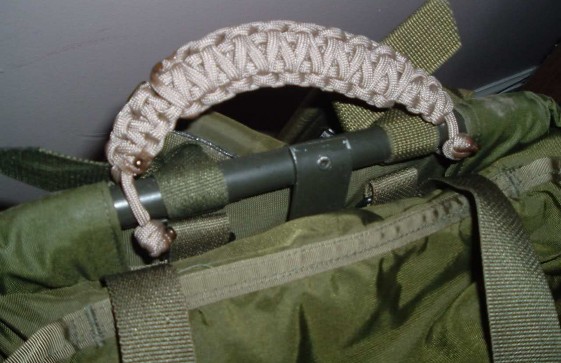
Braided paracord can be used as additional handles for your backpack or bag.
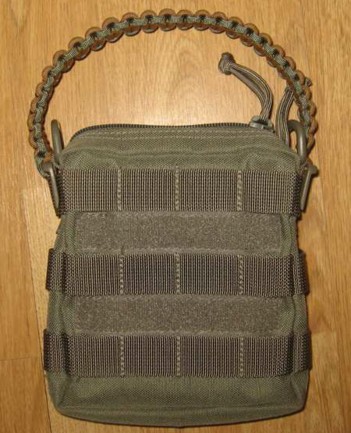
Pouch with handle made of woven paracord
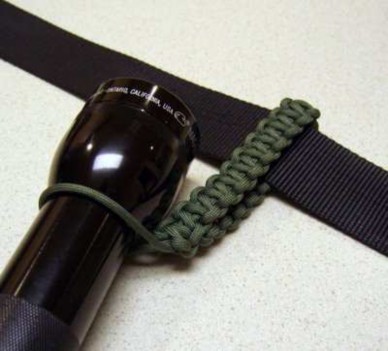
Paracord can be an excellent bracelet for attaching a flashlight.
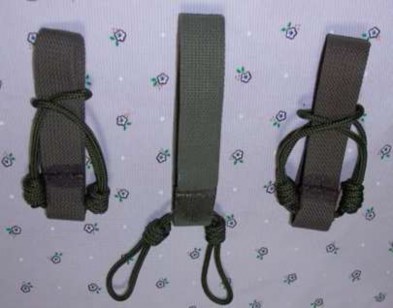
This belt and pendants from the paracord are used to link birds or rabbits to the belt during hunting.
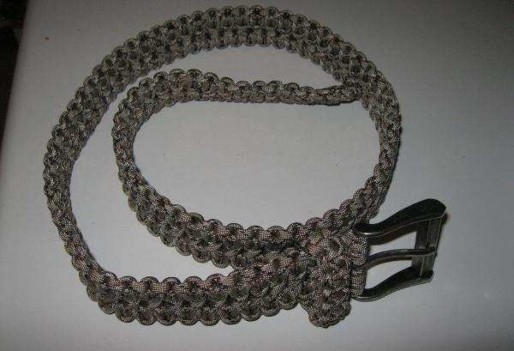
A parakord belt made with a similar weaving technique as the rest of the paracord straps.
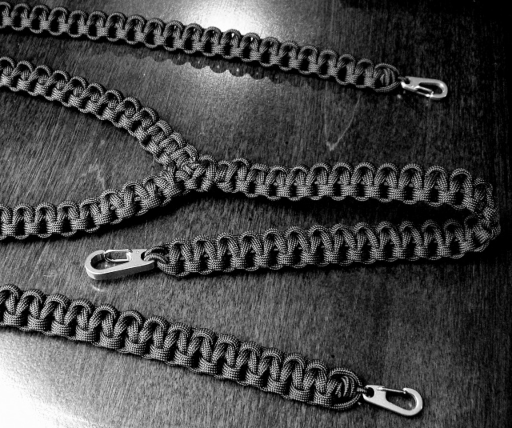
These pendants are also made of woven paracord.

Using the paracord, you get excellent bridles and reins for horses.
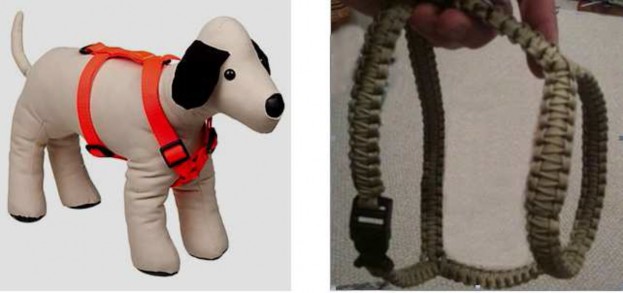
If you need a safety harness for a dog, you can easily make it out of a paracord.
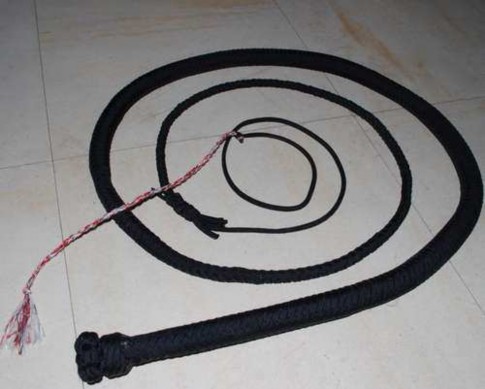
From the parakord you can even make a whip or whip.
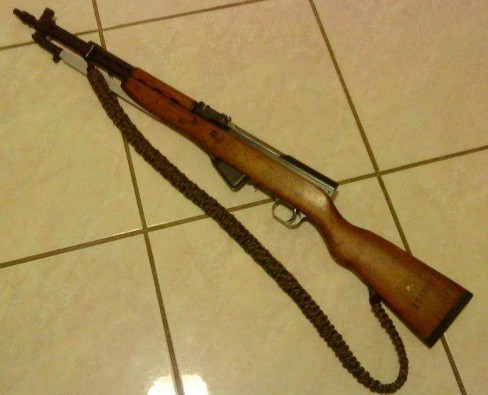
Also you can make a homemade belt for a gun, using a paracord.
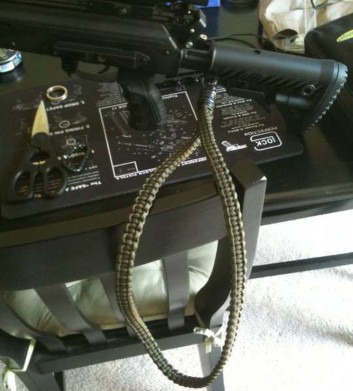
Another one of the parakord, one-point.
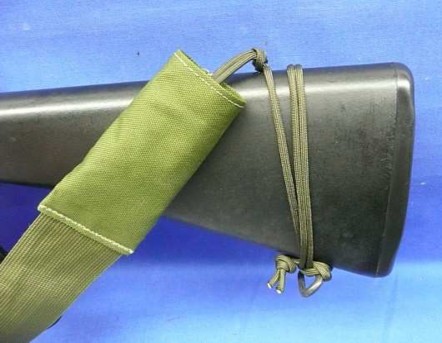
You can also attach the rifle to the corresponding belt with a para-cord.
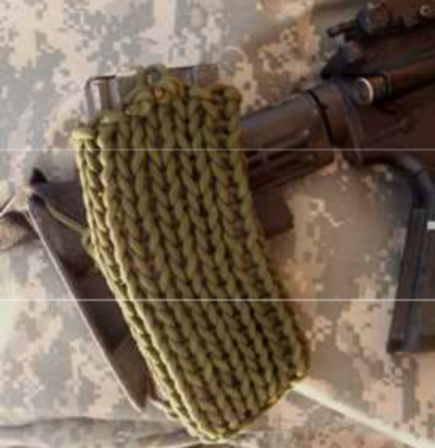
With the help of the paracord you can make a homemade case for cartridges, as, for example, this one.
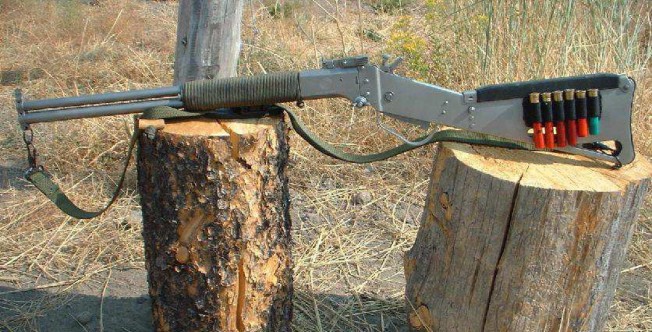
You can wrap the forge of your rifle with a paracord for effective thermal insulation.
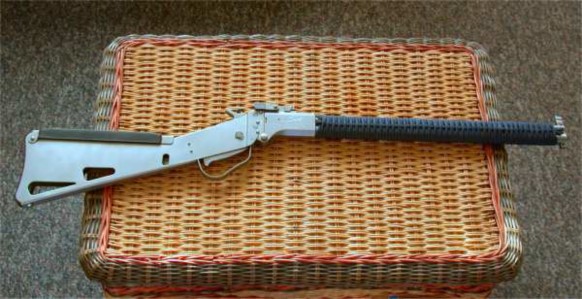

Paracord can also be used as a self-made pin holder.
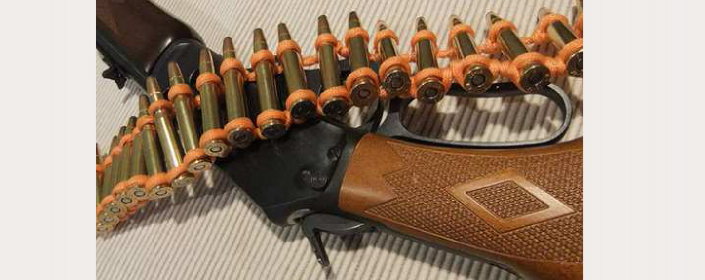
Here, for example, a self-made bandolier made of two threads of a paracord with a series of simple knots

Cartridge is an easy way to carry additional ammunition if you do not have special military field equipment.
Empty bottles from under the soda plus paracord and you get from a personal jar.
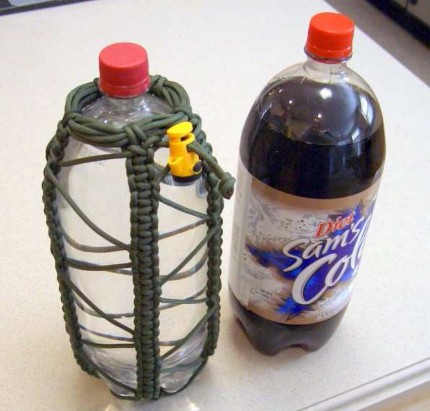
From the paracord you can make a grid for storing dirty laundry, etc.
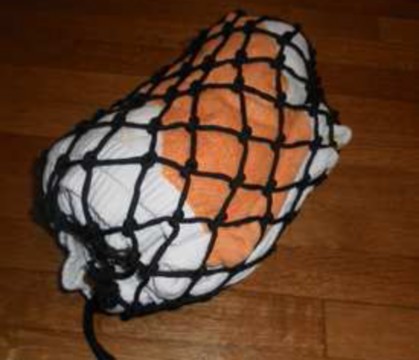
Need a pothook for cooking in the camping? Crochet like the parakord.
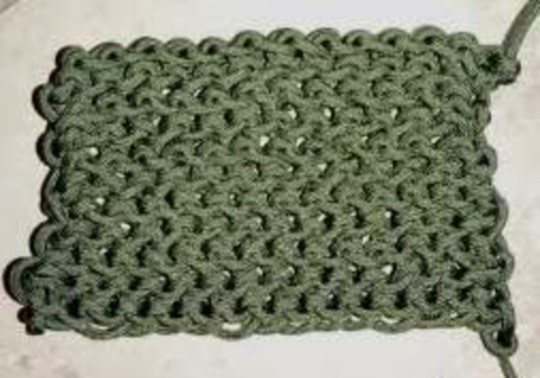
This headband is made of a paracord for a similar, hook technique.
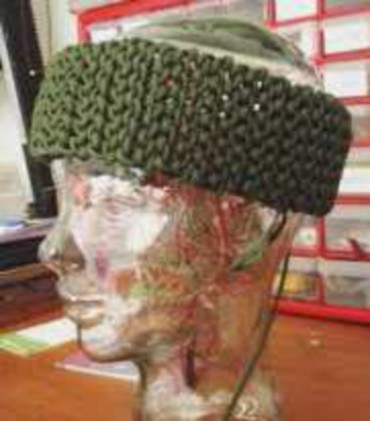
From the paracord you can make rack-mounts for many small items, for example, for beer.
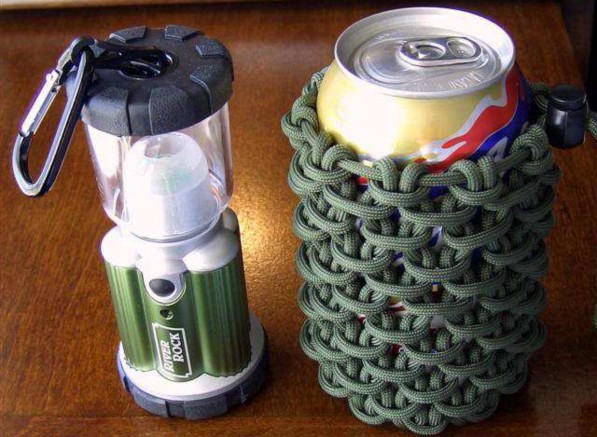
Excellent case for a jar of parakord and multifunctional case.
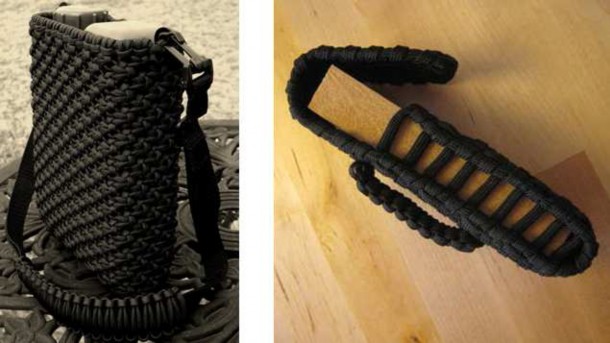
You can combine paracord with a large piece of fabric to make a hanging chair under the trees.
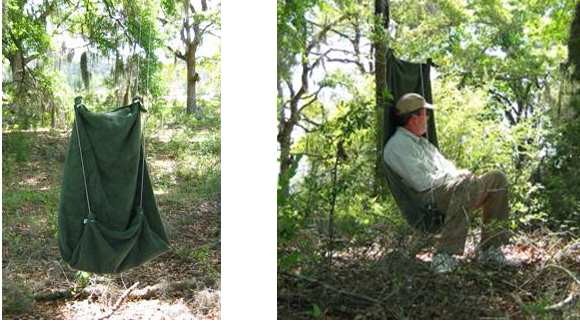
From the paracord you can also get a strong braid, which can be used in beach chairs.
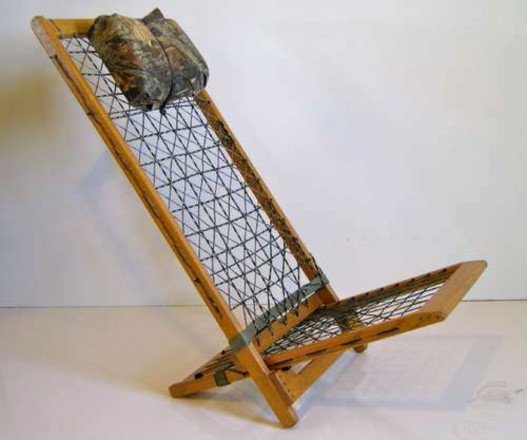
Paracord can be wrapped handles of tools or weapons for better grip.
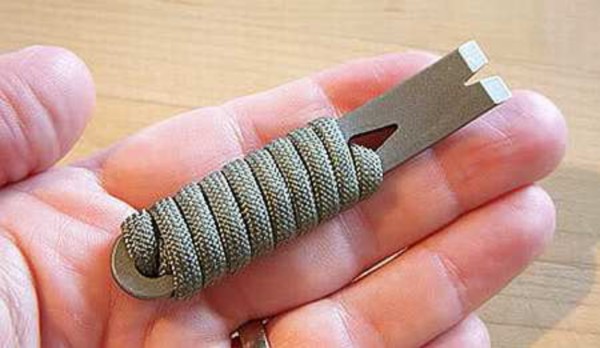
Recently, knives with handles, wrapped in a paracord, are gaining popularity.
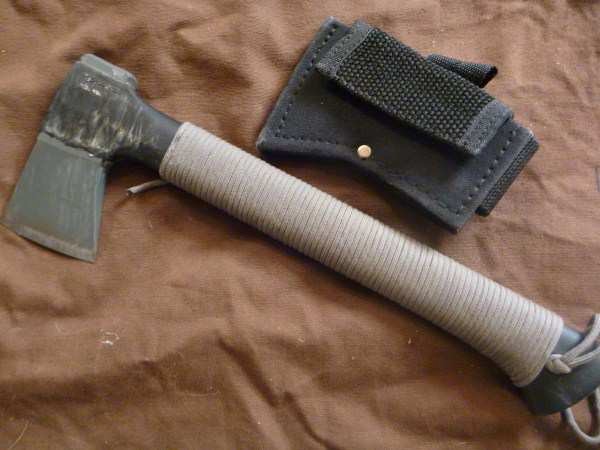
Paracord will improve the grip on the handle of the instrument, in addition, it can always be removed for other uses.
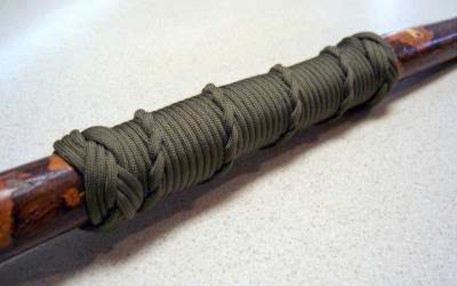
Some people like to make parakord handles for their walking sticks.
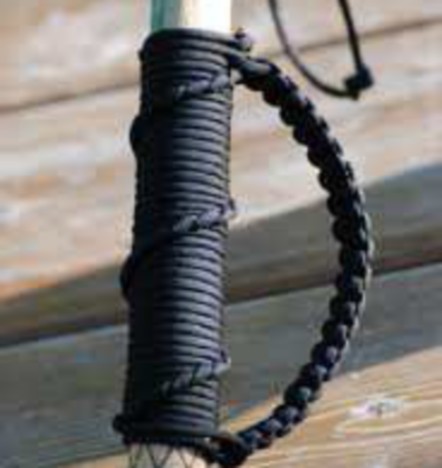
If desired, a retention belt can be added to the handle.
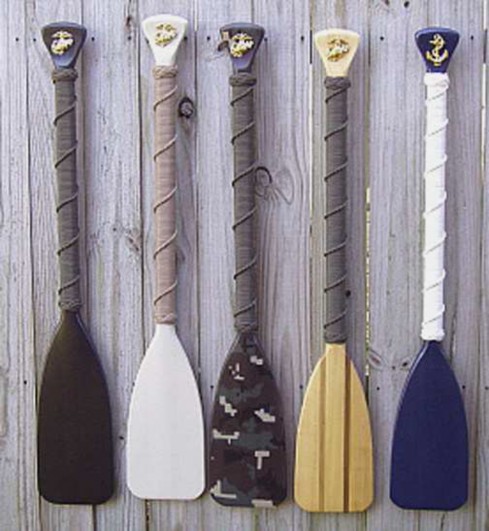
Look at those oars wrapped in a paracord.
Via guardianparacord.com & wiki


Comments
Commenting on, remember that the content and tone of your message can hurt the feelings of real people, show respect and tolerance to your interlocutors even if you do not share their opinion, your behavior in the conditions of freedom of expression and anonymity provided by the Internet, changes Not only virtual, but also the real world. All comments are hidden from the index, spam is controlled.